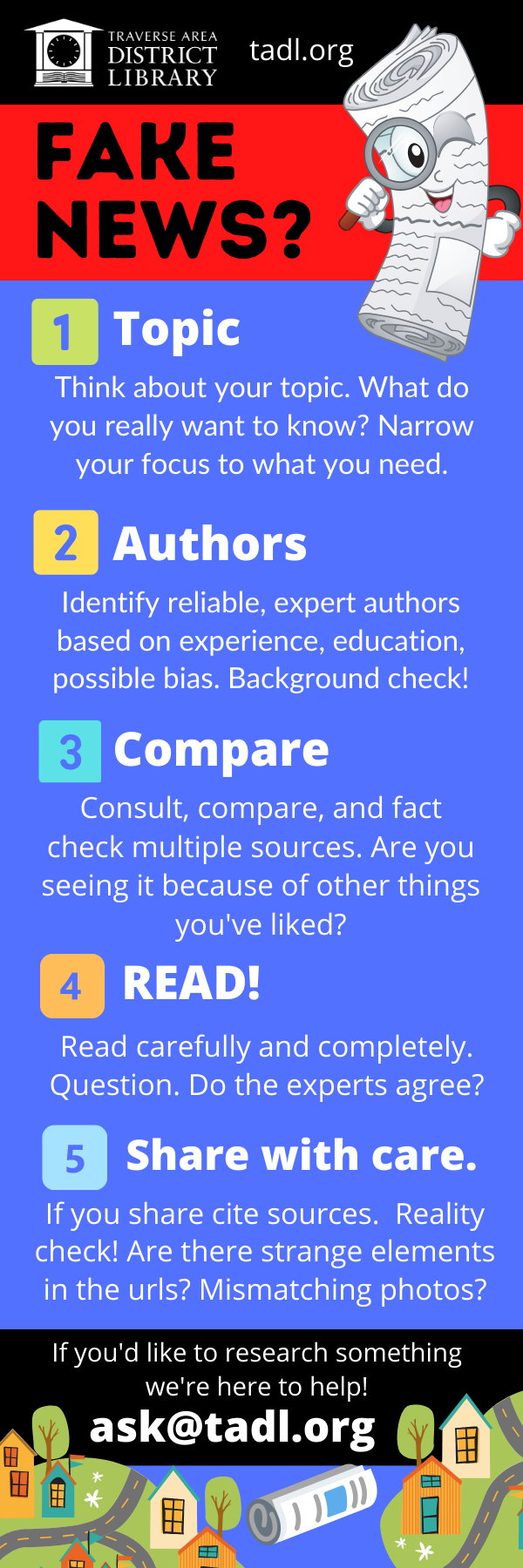As consumers we evaluate our buying decisions all the time. As information consumers, it's vitally important that we use a skeptical eye when reading information.
SIFT the Information
SIFT is a helpful acronym for initially evaluating source credibility. SIFT (from Mike Caulfield) stands for:
STOP. Pause.
- Ask yourself if you recognize the information source. Do you know anything about the website or the claim's reputation? If you start getting overwhelmed during this process, pause and remember your original purpose. Remember, you can always ask a librarian for help!
- Note if you have a strong reaction to the information you see (e.g., joy, pride, anger). If so, slow down before you share or use that information. We tend to react quickly and with less thought to things that evoke strong feelings. By pausing, you give your brain time to process your initial response and to analyze the information more critically.
INVESTIGATE the source.
- Take a minute to identify where this information comes from and to consider the creator's expertise and agenda. If the creator appears untrustworthy, the source may not be worth your time. Look at what others have said about the source to help with your evaluation. (For example, it may be written by an entity who will gain financially from the information.)
FIND trusted coverage.
- Get more perspectives. Look for credible sources, and compare information across multiple sources in order to determine whether there appears to be a consensus.
TRACE claims, quotes, and media back to the original context.
- Sometimes online information has been removed in pieces from its original context (for example, a news story is partially reproduced in another online publication or only an image is shared on Twitter). Trace the information back to the original source in order to get the full story.
Modified from Mike Caulfield's SIFT (Four Moves), which is licensed under a Creative Commons Attribution 4.0 International License.
Once you determine that a source is worth your time, you can return to the article itself and read it more carefully.
Another way to look at it, apply the CRAAP test! See our printable sheet at right.
